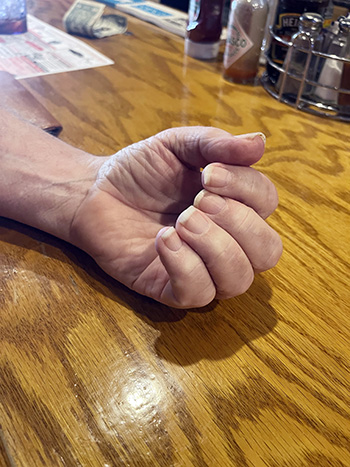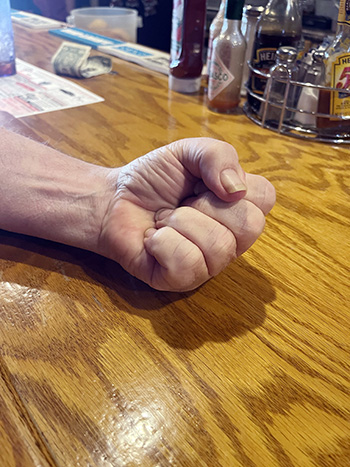Deb Abraham Spalding
Part 3: It’s All In What You Believe
As I fumbled along my healing path under the direction of Dr. Lo, I experienced massive improvements in digestion and relief of pain, as well as some weight loss.
Dr. Lo focuses on four main areas to help people: Nutritional Response Testing (NRT), chiropractic care, allergy screening and testing, and detox. At first, I thought Dr. Lo coached his patients through each quadrant of treatments, but I was incorrect. Simply put, if the client does not need a treatment, the client doesn’t get it.
As you may recall from last month’s article, I believed I needed chiropractic care. Afterall, I had received chiropractic care over the course of more than 20 years. Sometimes, I was seeking help several times a week.
It was a shock to learn from Dr. Lo that I didn’t need chiropractic, as long as I was not eating the things that triggered the spasm that ignited the nerves responsible for the back pain. Now, understanding this, I no longer believe I need chiropractic. I am not in pain.
Recently, I talked to a man named Skeeter who shared his path to healing with me. Skeeter sought the help of a fourth-generation acupuncturist in Frederick for vertigo and sciatica. Skeeter explained, “They’re the first [the acupuncturists], after five doctors, who helped me.” He added, “They take my insurance, so why not try it!”
Skeeter had problems with vertigo, sciatica, limitation of movement in his hands after hand and wrist surgery, and joint pain associated with Lyme Disease. The acupuncture helped the vertigo after two treatments. Then, the acupuncturist started on the sciatica. Like Dr. Lo, this doctor was working through the issues.
Skeeter had acupuncture treatments twice a week for three weeks, then once a week for another three weeks, and, now, after four months of treatments, he only goes once a month. The doctor performed acupuncture on each joint in his hands. Before, Skeeter “couldn’t pick up a quarter.” Now, Skeeter can make a fist and pick up all the change he wants—“even dimes!”
He had Lyme Disease that was causing joint pain from “dry joints.” Since receiving the acupuncture, he has had more tests for Lyme and now has only two out of five bands in the Lyme test.
Skeeter’s symptoms and pains are less severe than ever. The sciatica and vertigo are 85-90 percent gone.
As much as I have been preaching nutrition, nutrition, nutrition with Dr. Lo’s NRT program, Skeeter hasn’t changed his diet at all with acupuncture. He said, “Unlike normal medicine where you take a pill and your headache goes away for a while, acupuncture helps long term.” Most importantly, Skeeter claims, “If you believe in the treatment, believe it will help you, then it will help.”
Skeeter’s acupuncturist was recommended to him by a western medicine doctor. “It’s helped a lot. I recommend it to anybody.”
Compared to my path where eating certain things are linked to various pains, Skeeter hasn’t changed his way of eating at all. Skeeter said, “It all depends on what you believe.” The acupuncture is really working for Skeeter. I can’t help but to believe Skeeter.
What is the path to health? Dr. Lo has several. He’s an excellent doctor. Skeeter’s acupuncture doctor also has a path to health. I think the reason for writing these articles has been to show all of our readers that going to a traditional doctor and taking pills isn’t the only way. As a matter of fact, those pills sometimes cause more problems that need more pills. It’s a crazy cycle. Maybe there’s a different path for you. We’ve told you about two options here.
Please note, I named Dr. Lo because he’s a columnist and advertiser on our Banner Team. I didn’t name the acupuncturist because he’s not an advertiser or writer for this newzine.
I wish you the very best on your path to health.


Example of how far Skeeter could close a fist before (left) and after (right) acupuncture.
Photos by Deb Abraham Spalding

